From the 1970s radical Sikh leadership organized and mobilized the Sikh grassroots to push back against colonial dispossession through empowering Sikh Sangat to embody their Guru-bestowed sovereignty. These mass mobilization rocked the fascist foundations that the Indian state was built upon. In response to the rising tide of Sikh activism in the 1980s, the Indian state deployed the full force of its military to decisively crush the Sikh rebellion by attacking and occupying Sri Darbar Sahib and 54 other Gurdwareh in June 1984, which culminated in genocide in November 1984.
The Indian establishment did not count on their genocidal violence igniting the audacious spirit of Sikh resistance and launching an insurgency for the liberation of Khalistan. Sant Jarnail Singh Ji unmasked the true nature of the Brahminical Indian state by invoking the bond Sikh have with their Guru and our illustrious lineage of selfless martyrdom and resistance to domination that defines the interwoven tapestry of our very existence.
This project by the National Sikh Youth Federation seeks to bring the context to the forefront of the conversation. This exhibition has been displayed in psychical form all over the UK, in America, Canada, and Australia. It pulls into focus the larger context that defines “1984” and frames a clear narrative, rooted in Sikh history, that shatters the imposed isolation around “1984”.

On 31st October Sikhs 1984 Shaheed Bhai Beant Singh and Shaheed Bhai Satwant Singh assassinated the indian prime minister for ordering the attack on Sri Darbar Sahib in June 1984. The indian government thought striking at the heart of the Sikh Quam would crush our spirit and the rising Sikh movement for freedom from india. Instead it was the “mother” of indian politics who sealed her own fate and the Quam received the only justice we have seen since 1984.
Between October 31st 1984 and November 5th 1984 the indian establishment responded to teach Sikhs a “lesson” and the world stood back as state sponsored mobs systematically burned, raped, and killed Sikhs in the streets of india’s capitol Delhi and in states all over india where the ruling congress party had control. This organised anti-Sikh violence was neither random nor an “outpouring of grief” as is claimed by the indian government; rather a governmental response to a conflict that had been building for generations.
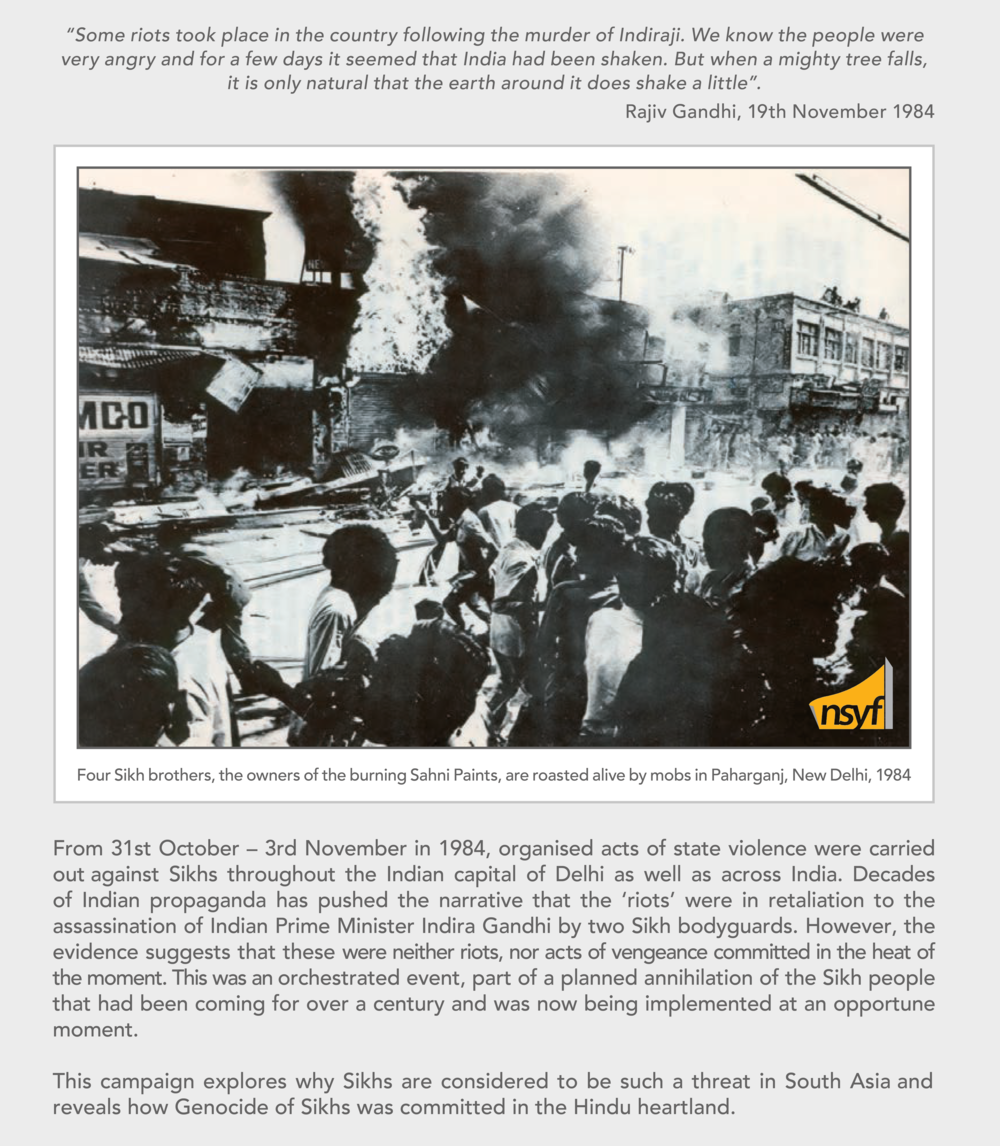
“The next section of ‘A Candle in the Dark’ looks at the roots of the conflict that Sikhs have with Brahmanical fascism. What happened in 1984 was not detached from what Sikhs are, in fact it was a direct response to the challenge that Sikhi poses not only to the authority of the indian state, but to British colonisers, and the Mughal empire.”
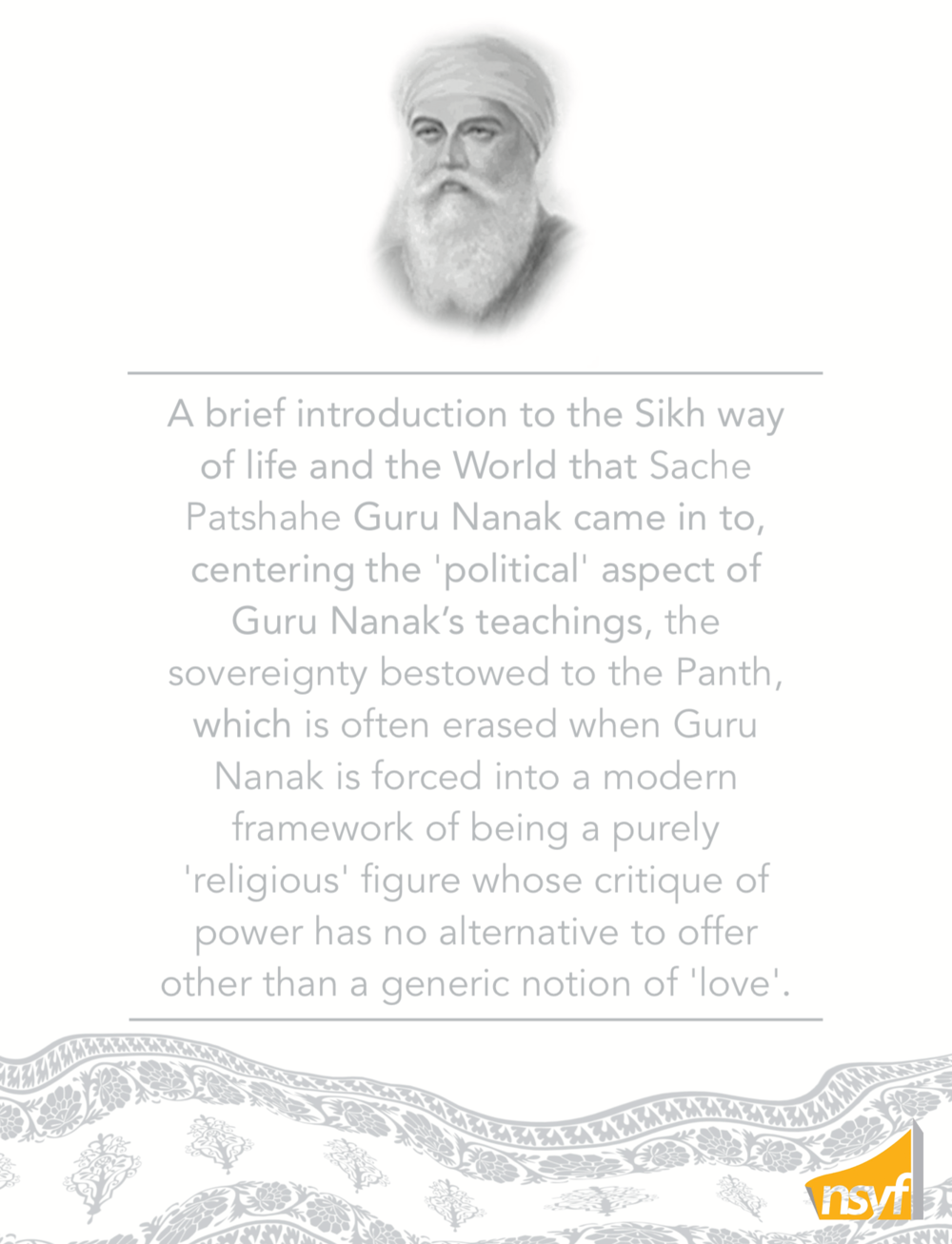
“Striving to live the Sikh way has brought the Panth into continual conflict with those that seek to dominate and exploit creation. Our sovereignty demands that we create space to exist outside of domination and secure Khalsa Raj, realising the purpose of the Khalsa.
From Kartarpur to Khalistan ✊🏾”
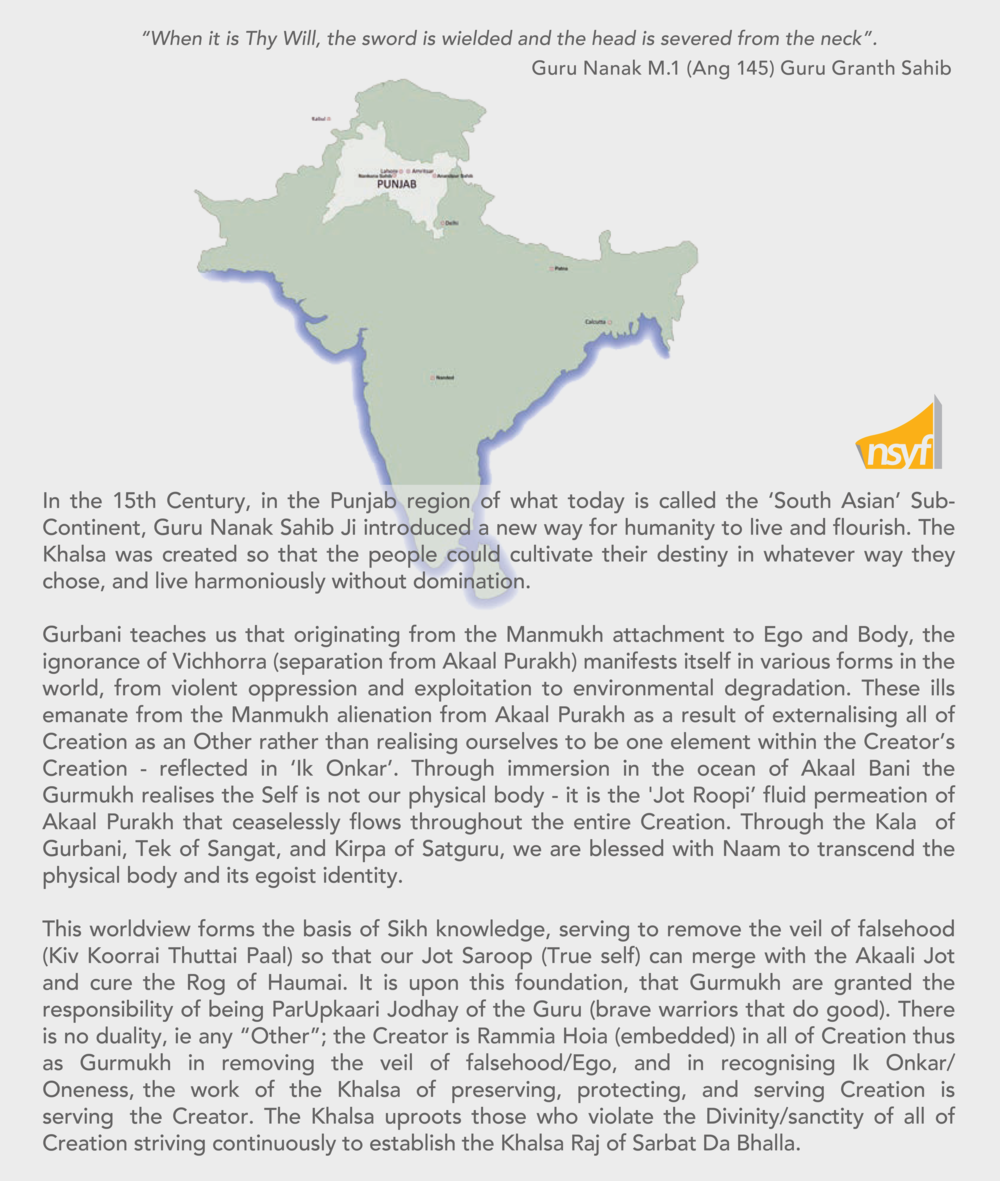

“Sikhs continually strive to exercise their sovereignty and forever refuse to bow under oppression. The physical losses we endured in our early history were matched only by the Indian government, yet despite sustained efforts to destroy us, the Sikh spirit remains defiant and in perpetual sovereignty.”
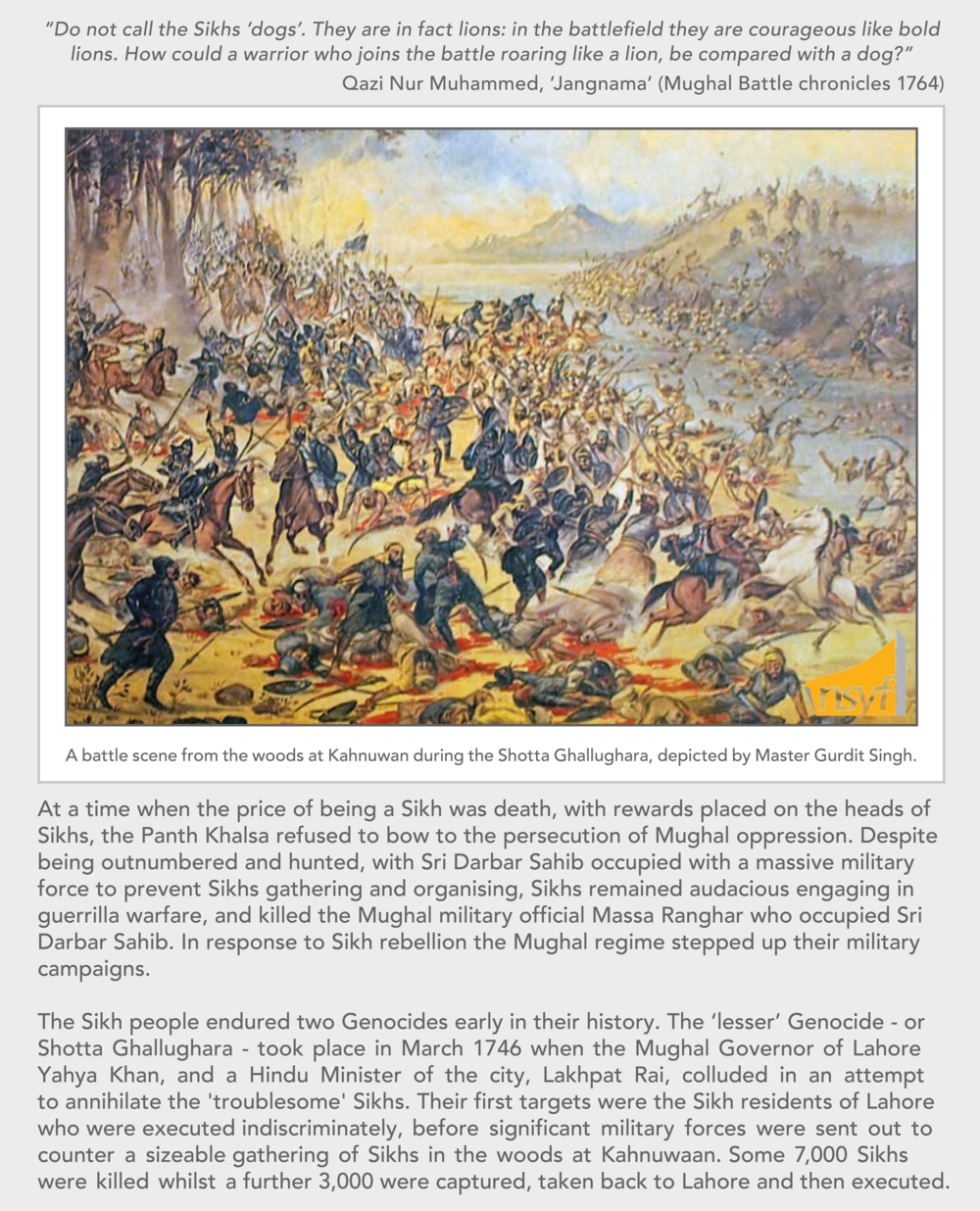
“Our early history is one of intense persecution and displacement, with Sri Darbar Sahib being repeatedly occupied and demolished. In this environment Sikhs still managed to retain their principles and sense of self, behaving as sovereigns ensuring the survival of the Sikh way. In the face of annihilation Sikhs enacted their sovereignty by defending themselves and the people, forging their history by continually challenging the oppressive ways of dominant rulers.”
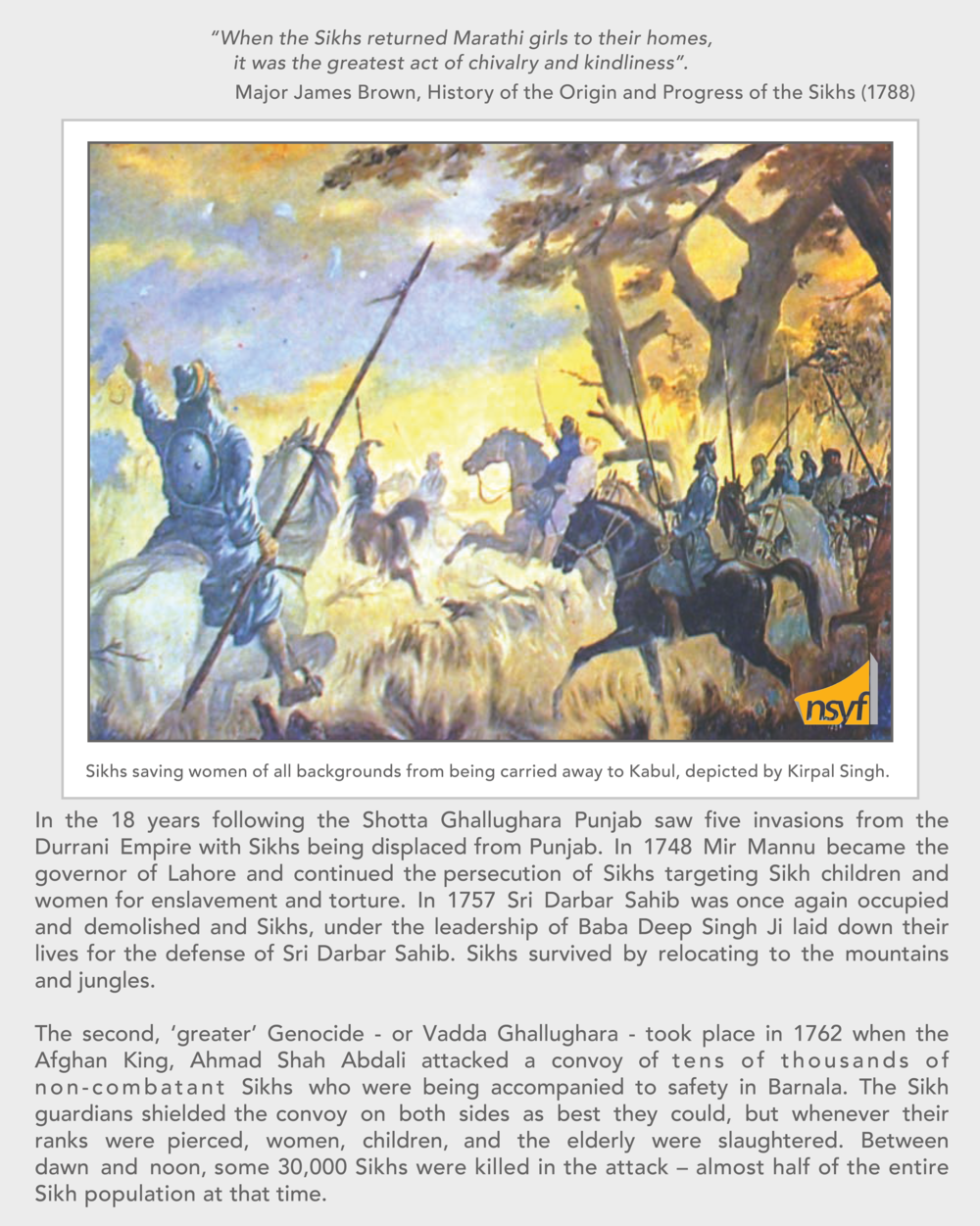
“Every invader that has sought to dominate Punjab and its people has met the resistance of the Khalsa Panth. Oppressive powers have all used similar tactics to control and exploit Sikhs, from policies of annihilation, torture, and murder, to co-opting Sikh existence and the organising capacity and institutions of the Panth. Through mass displacement and genocide Sikhs continue to survive refusing to cede their sovereignty, and undermining oppressors, taking direction from their Guru-bestowed sovereignty and the indomitable relationship with the Guru.”
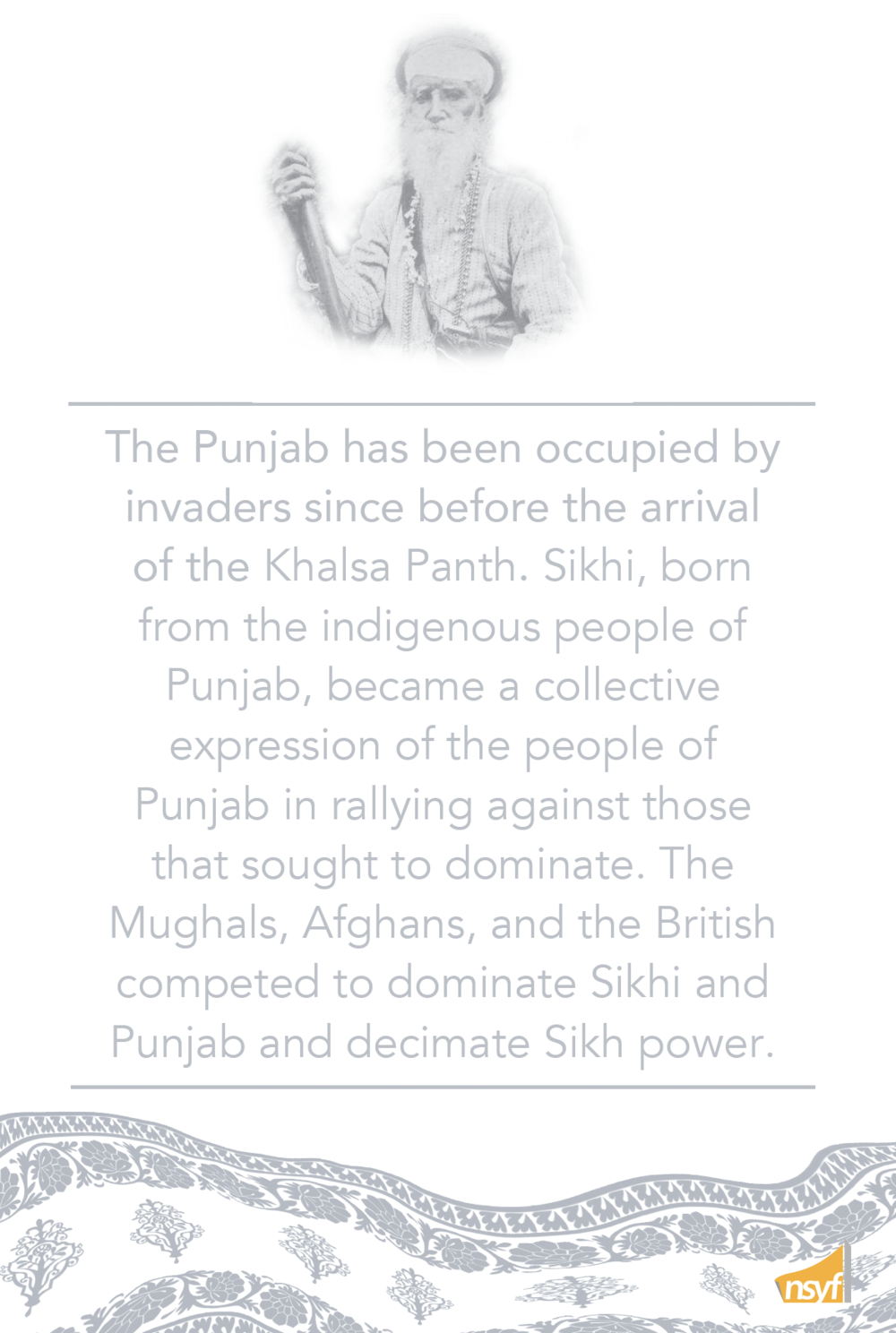
“From the 1700s to 1849, in an environment of oppression, Sikhs exerted their power in Punjab and established Raj in the name of Guru Nanak. Even though Sikhs faced multiple genocides and massacre, were vastly out numbered, and militarily under equipped Sikhs chose to pursue their sovereignty and Khalsa Raj at all costs.”
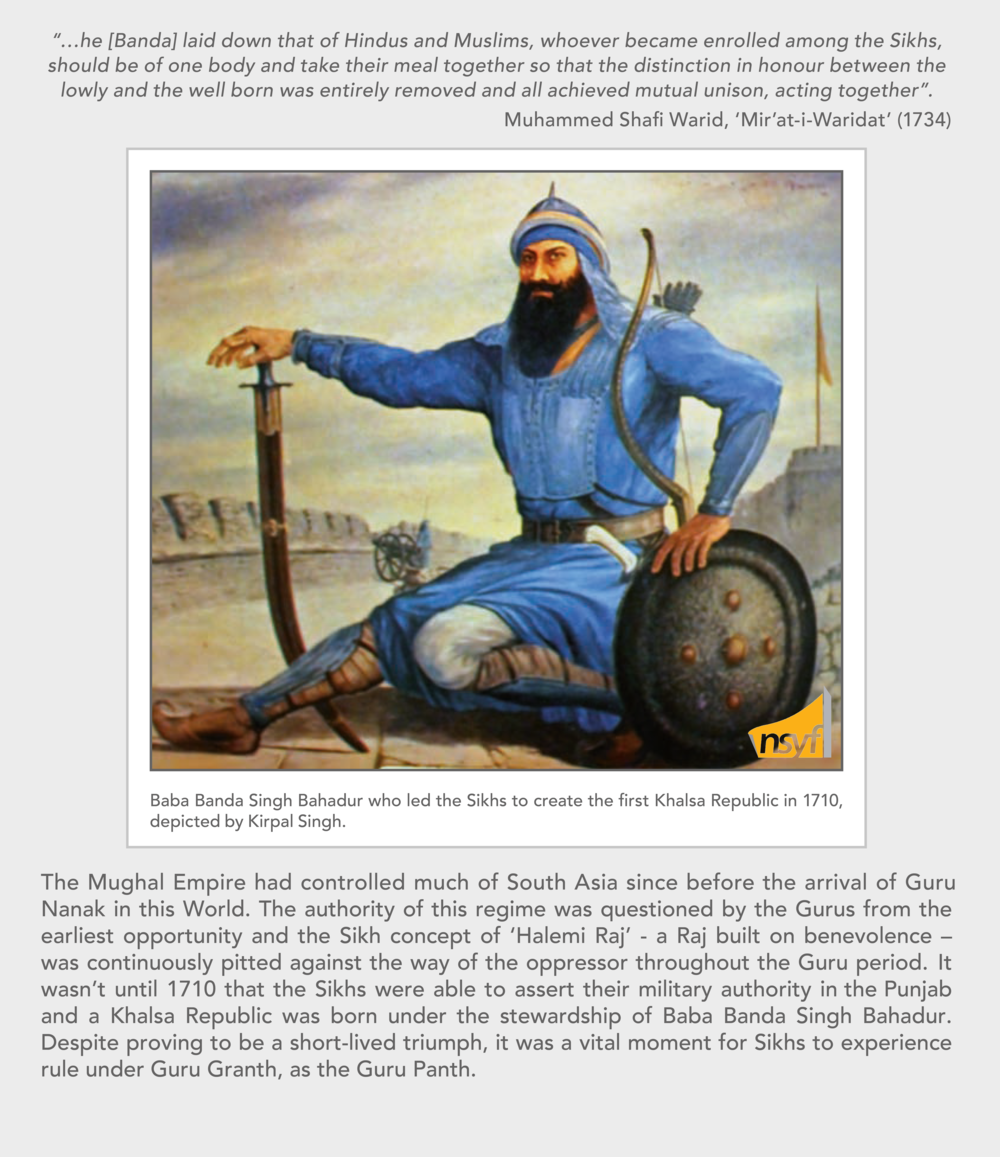
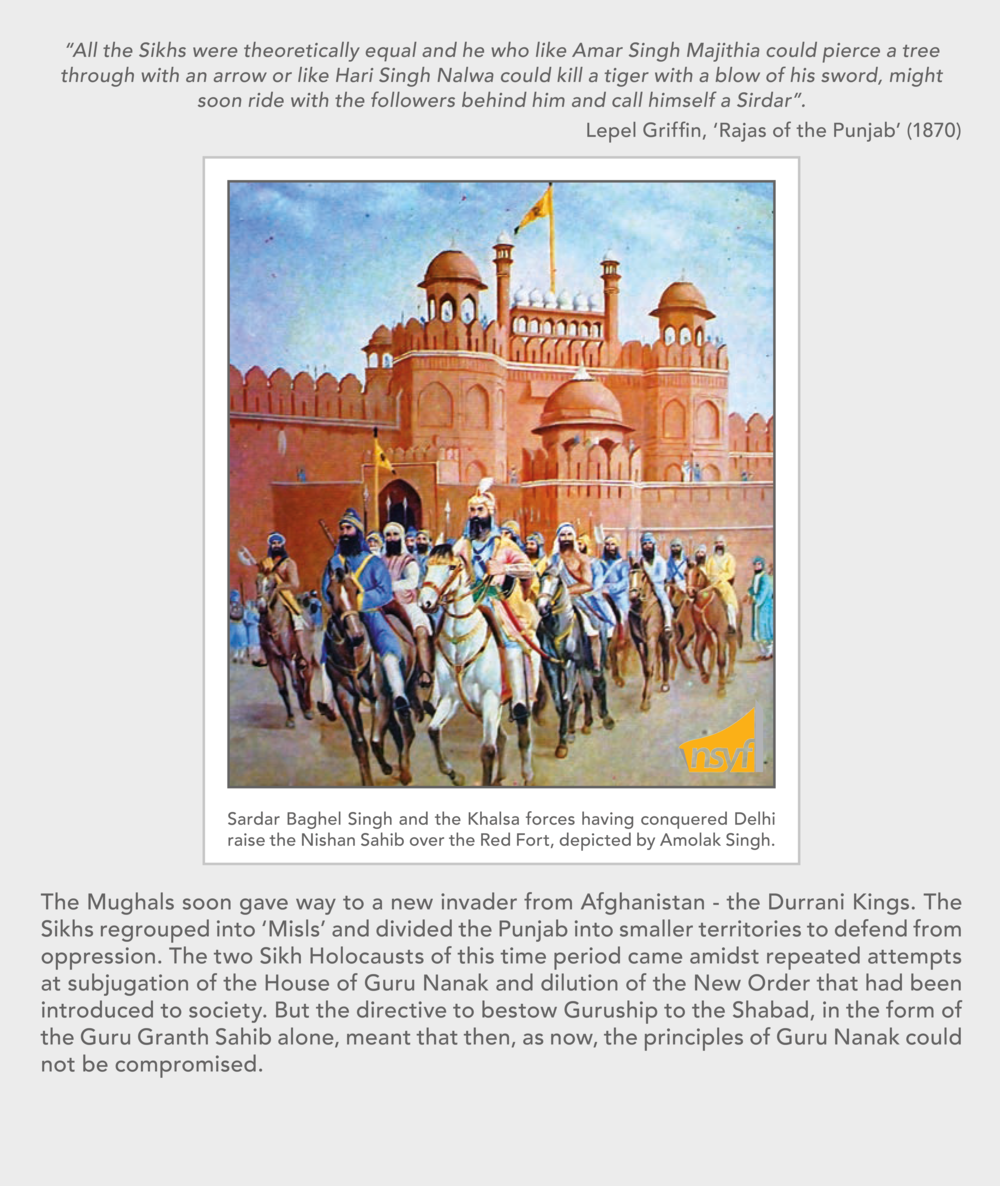
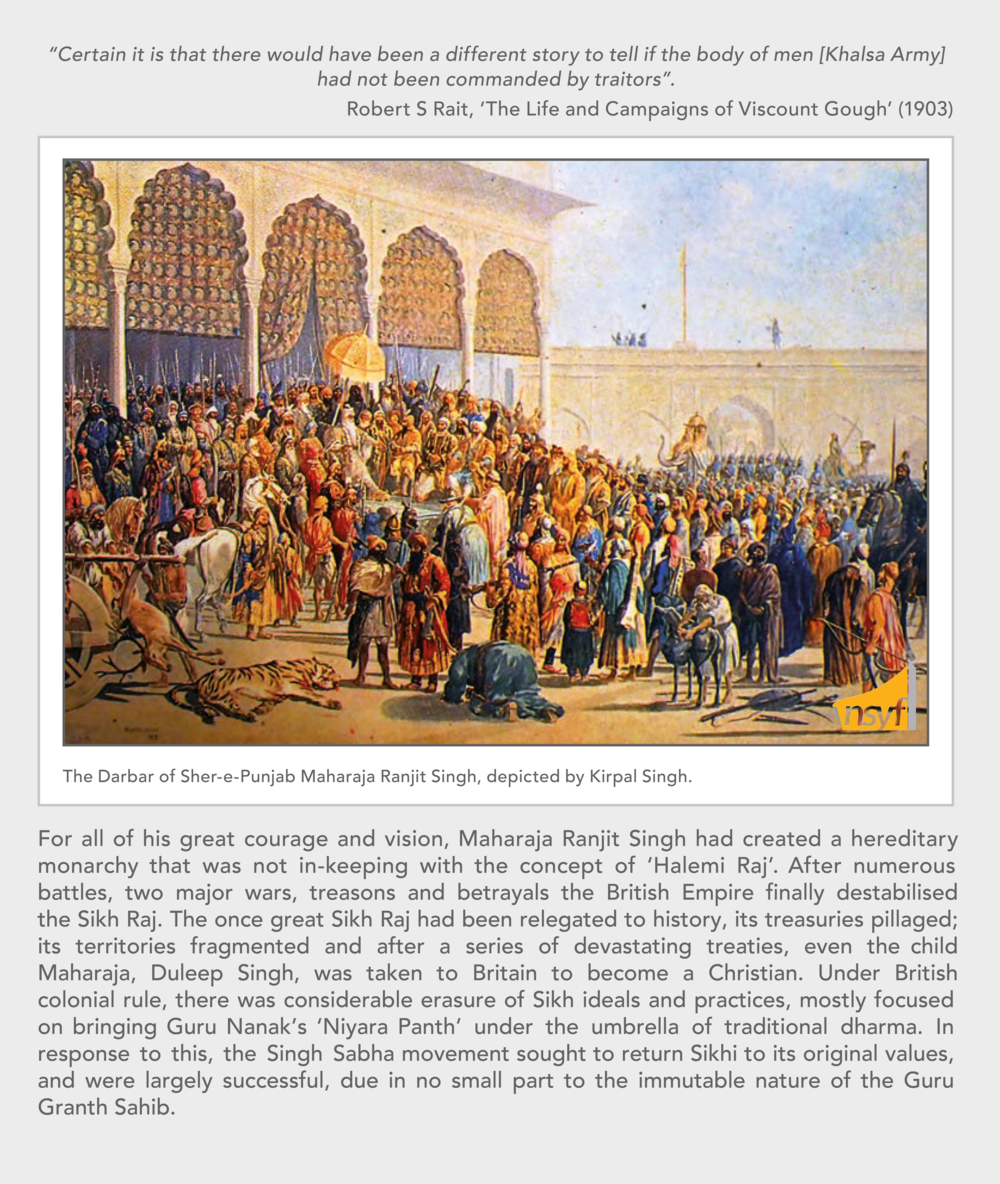
“In order to undermine the Panth’s agency and sovereign existence oppressive power structures have sought to annihilate us and justify their violence as a fitting response to Sikh rebellion.”
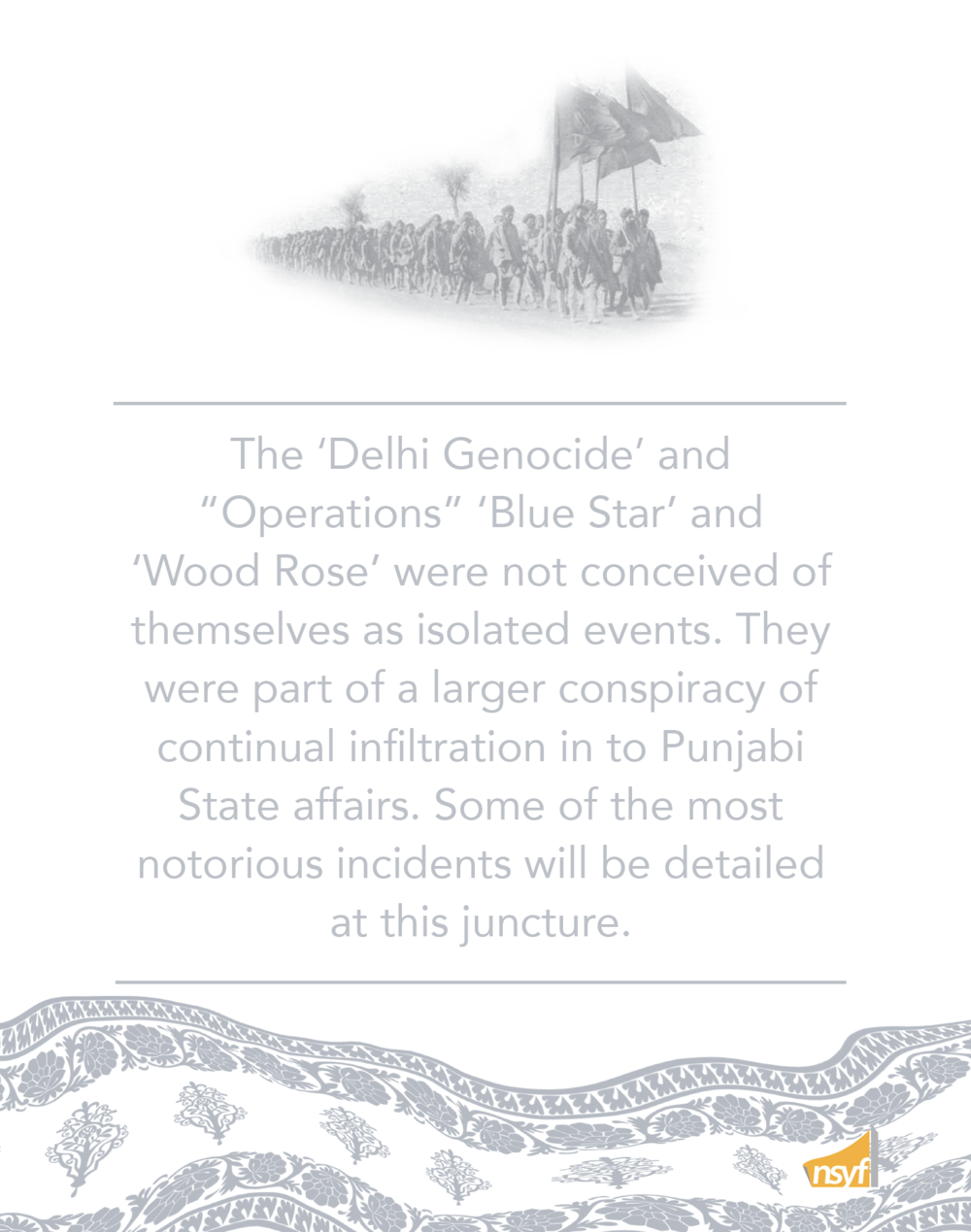
“Since the occupation of Punjab by the British in 1849 Sikhs have strived to regain their autonomy. The early Sikh diaspora made serious efforts to contribute to the liberation of their homeland, forsaking comforts to find belonging in the struggle.”
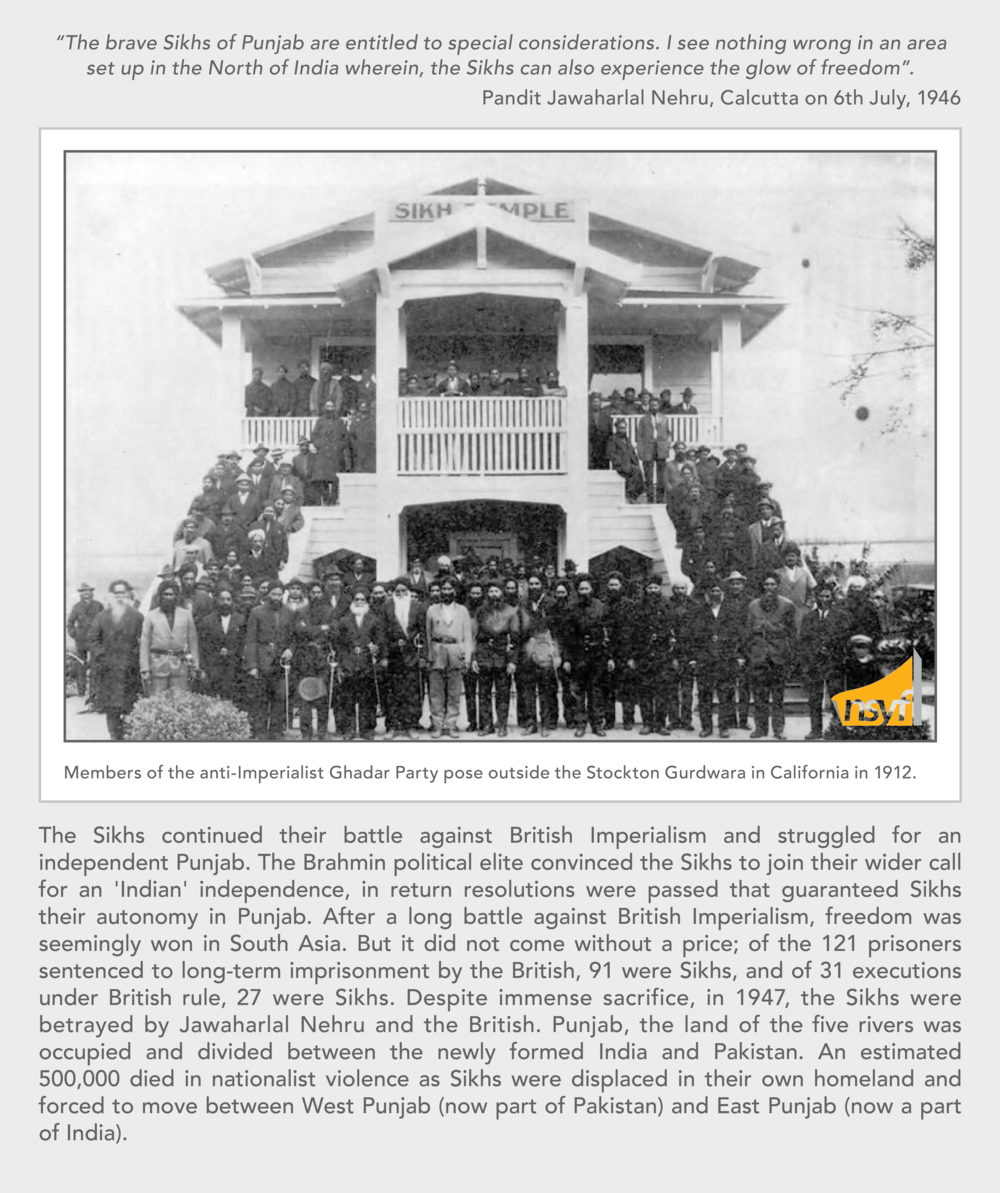
“The root of the conflict with the indian state, beyond Sikh opposition to Brahmin fascism, is centred on the occupation of our land & against genocidal state repression of Sikh agitations. Contemporary political, social, & environmental conflicts can all be traced back to 1947. No amount of “Sikh political representation” has solved any of these conflicts, the only hope for a Sikh future has come from the sacrifices and resistance of our great martyrs.”
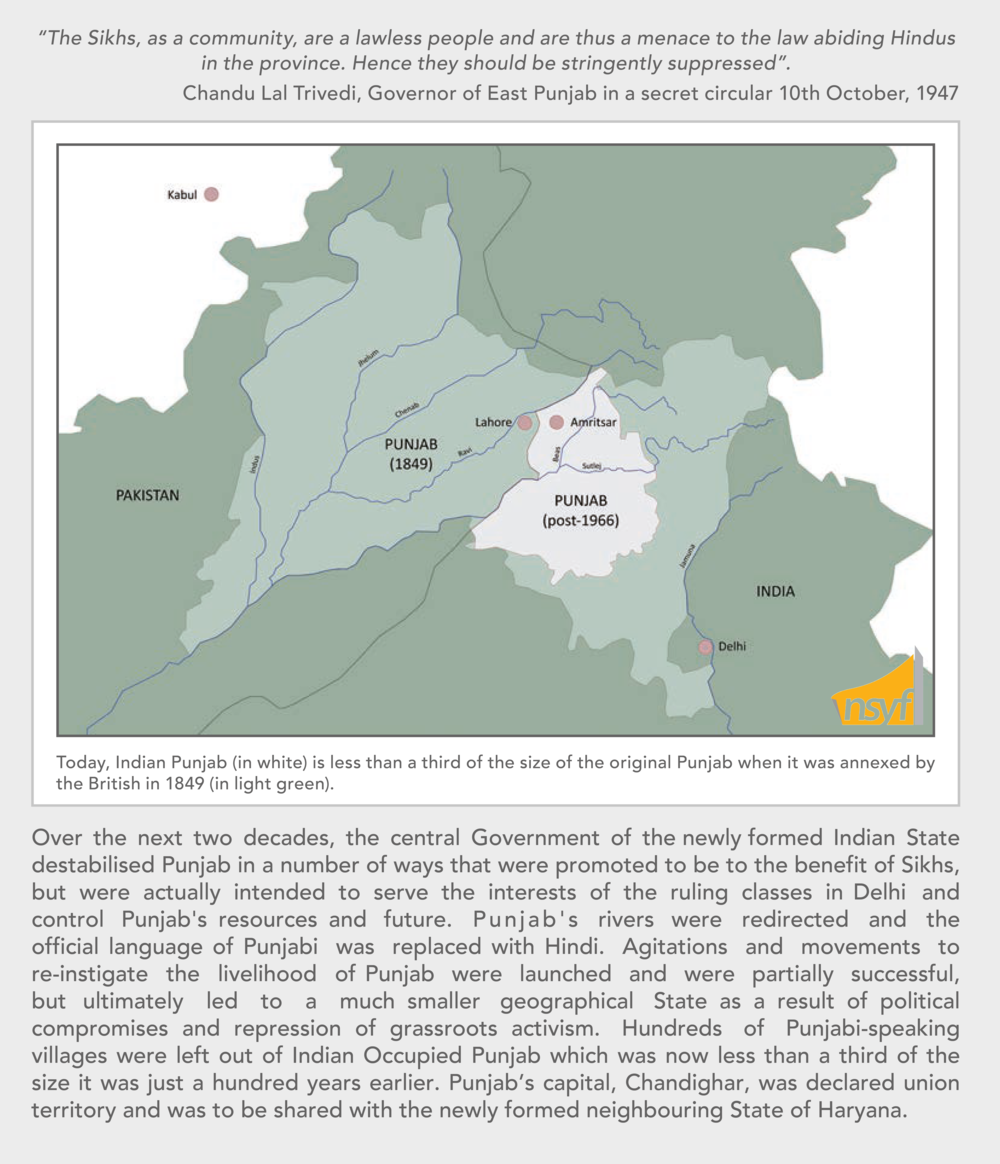
“The foundation of hatred towards Sikh sovereignty was laid in the 80s by the indian state and is still prevalent in indian public discourse till this day. This rhetoric is used to justify genocide and continues to be used by india to deny any accountability.”
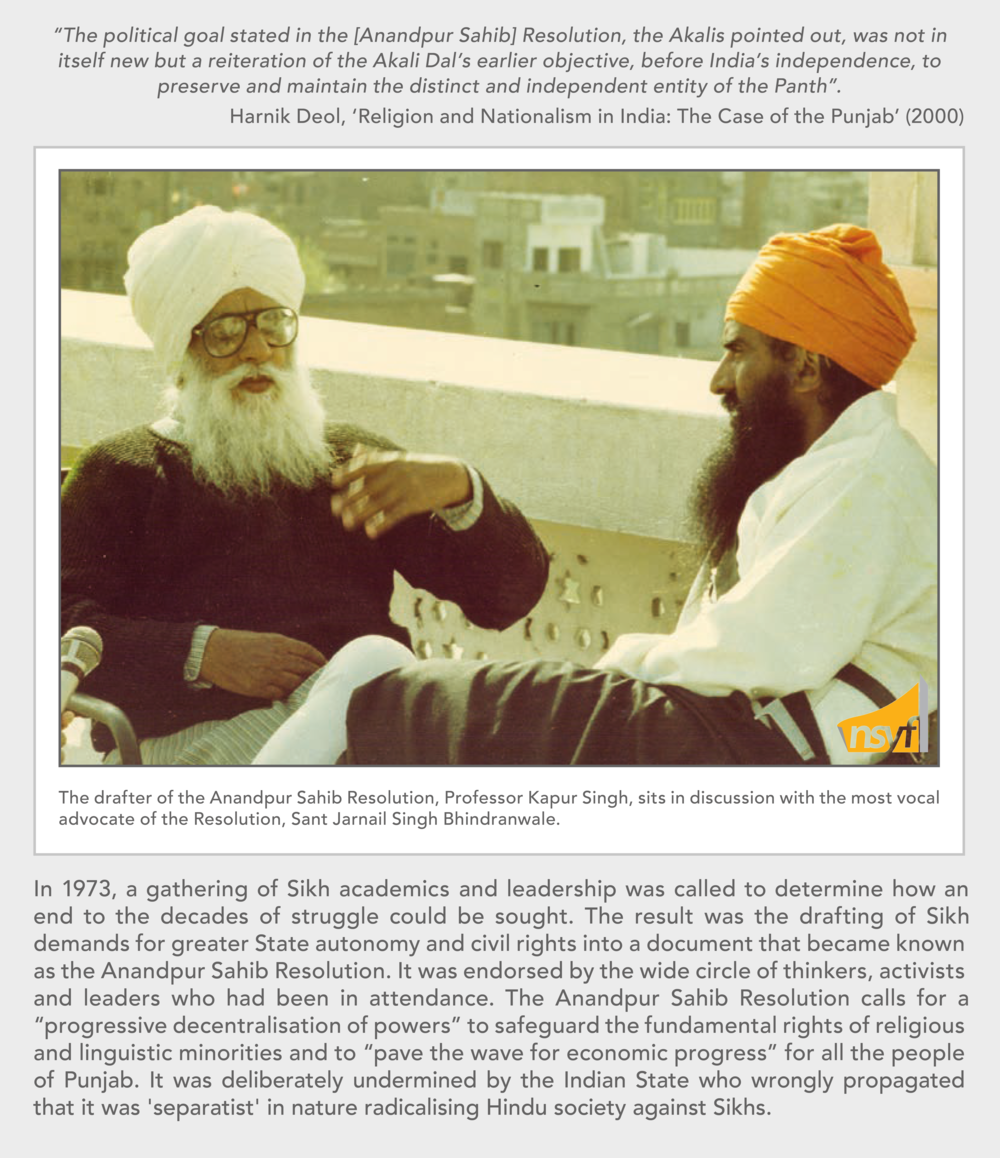
“To undermine Sikh socio-political organising the indian state created anti-Sikh structures. When Sikhs mounted resistance the indian state responded with police violence. This violence galvanised the Panthic grassroots, and set the stage for the Sikh liberation struggle.”
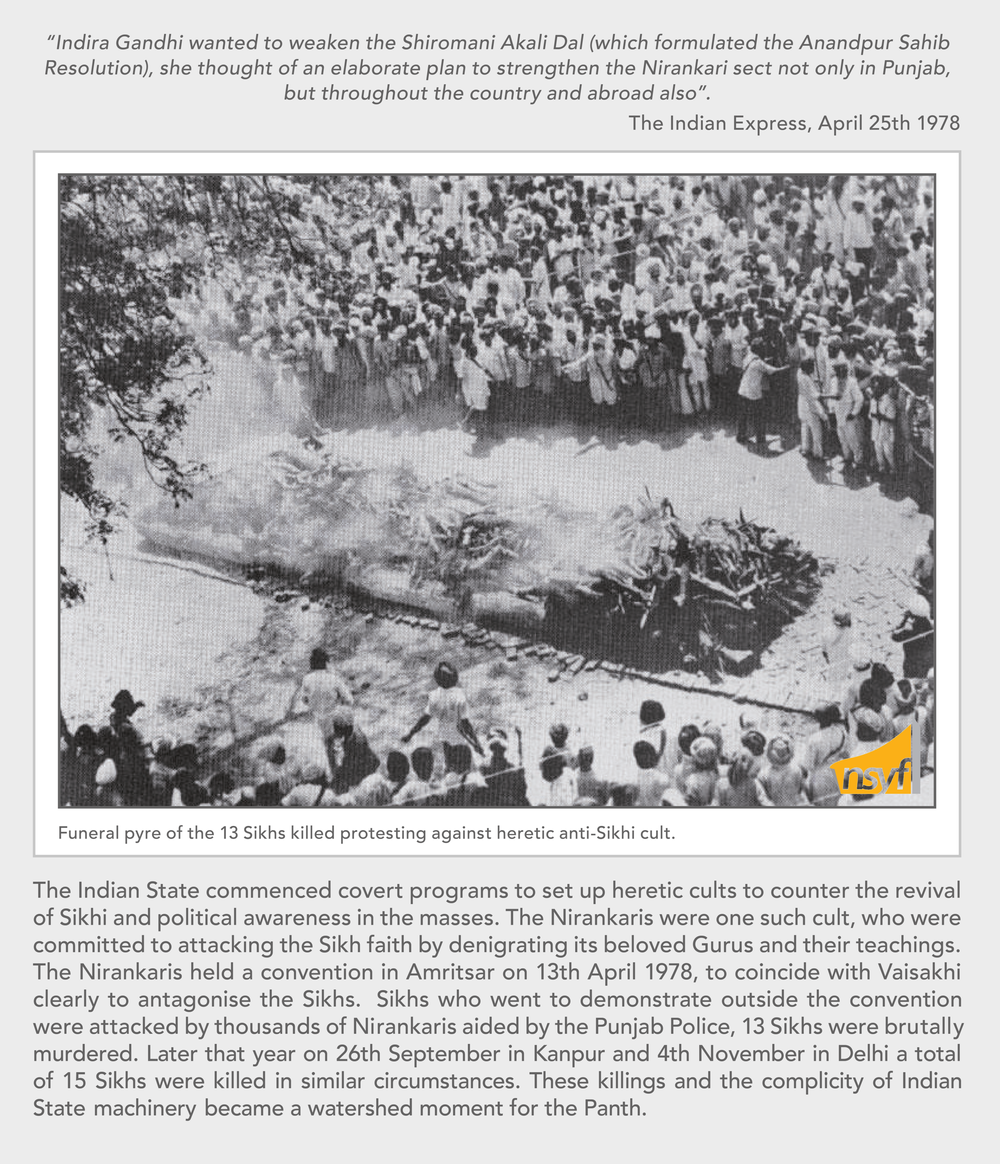
“Nearly 4 decades of negotiations sabotaged by the indian state in its desire to keep Sikhs in check. Till today the indian state presents the mass movement for Sikh liberation as a fringe of “religious extremists” sponsored by “foreign powers” in order to justify state violence.”
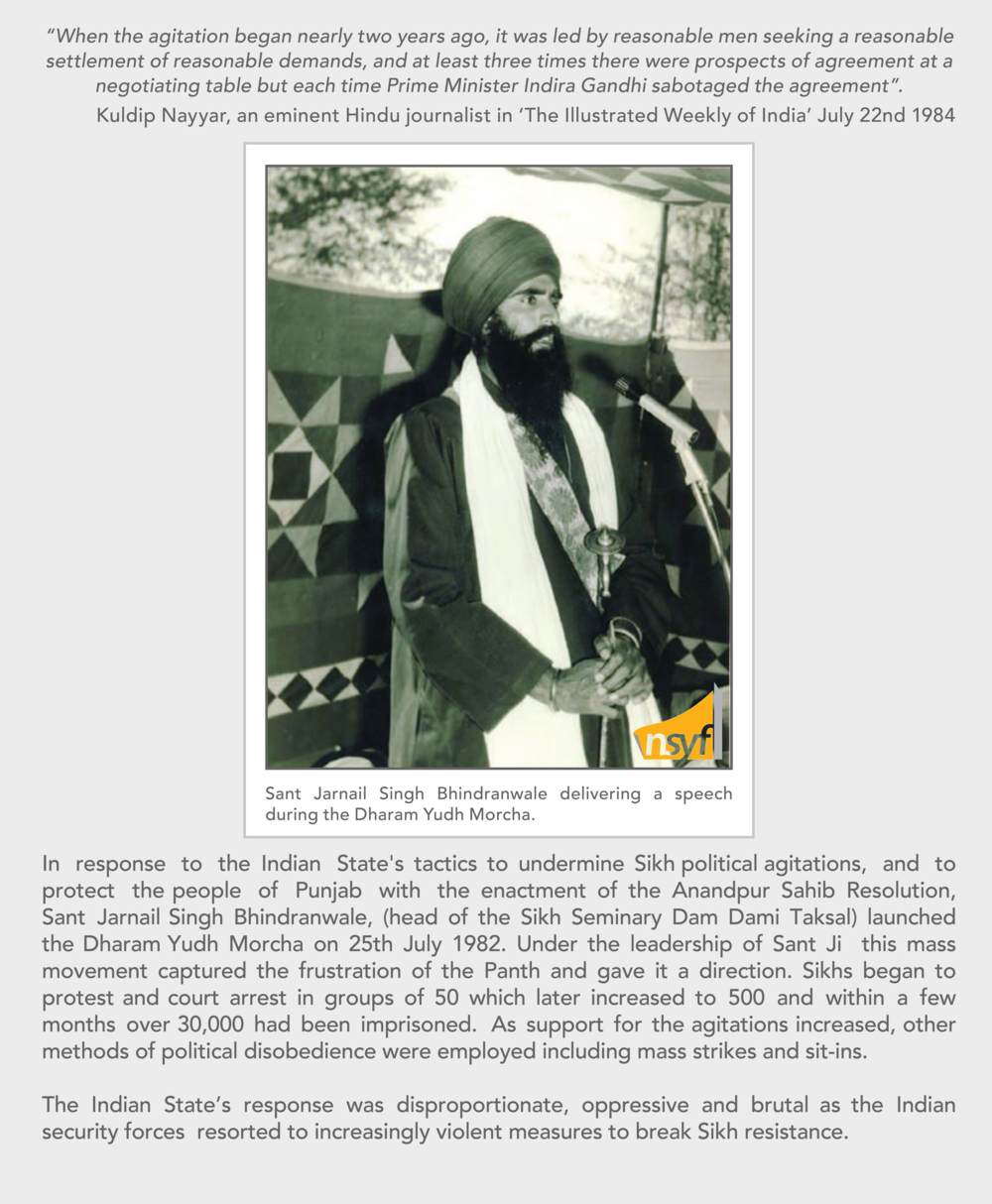
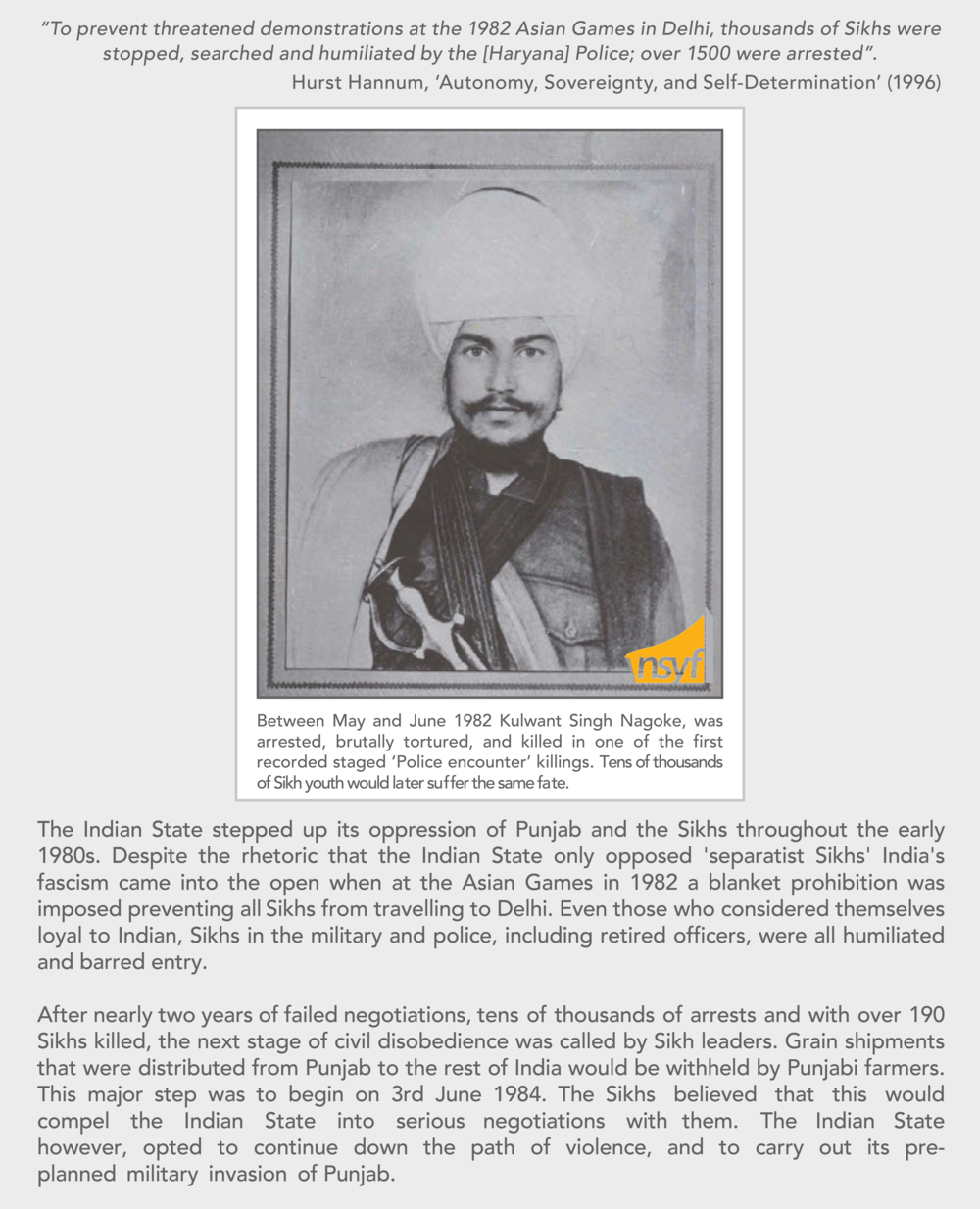
“The indian army invasion in June 1984 and the genocide between Nov 1984 to 1994 was designed to collectively punish the Sikhs for daring to live free and pursue their sovereignty.”
For more information on June please see the Battle of Amritsar
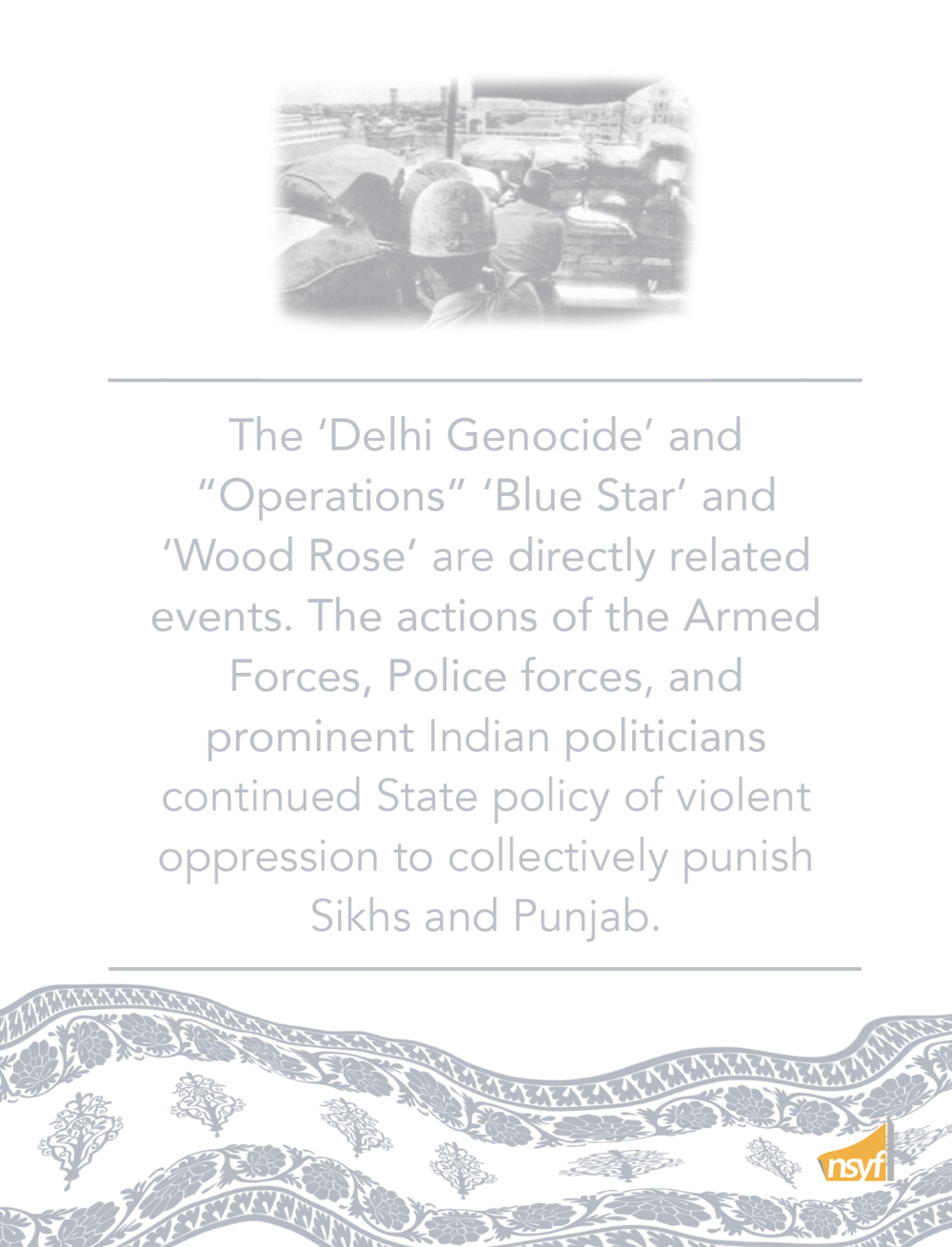
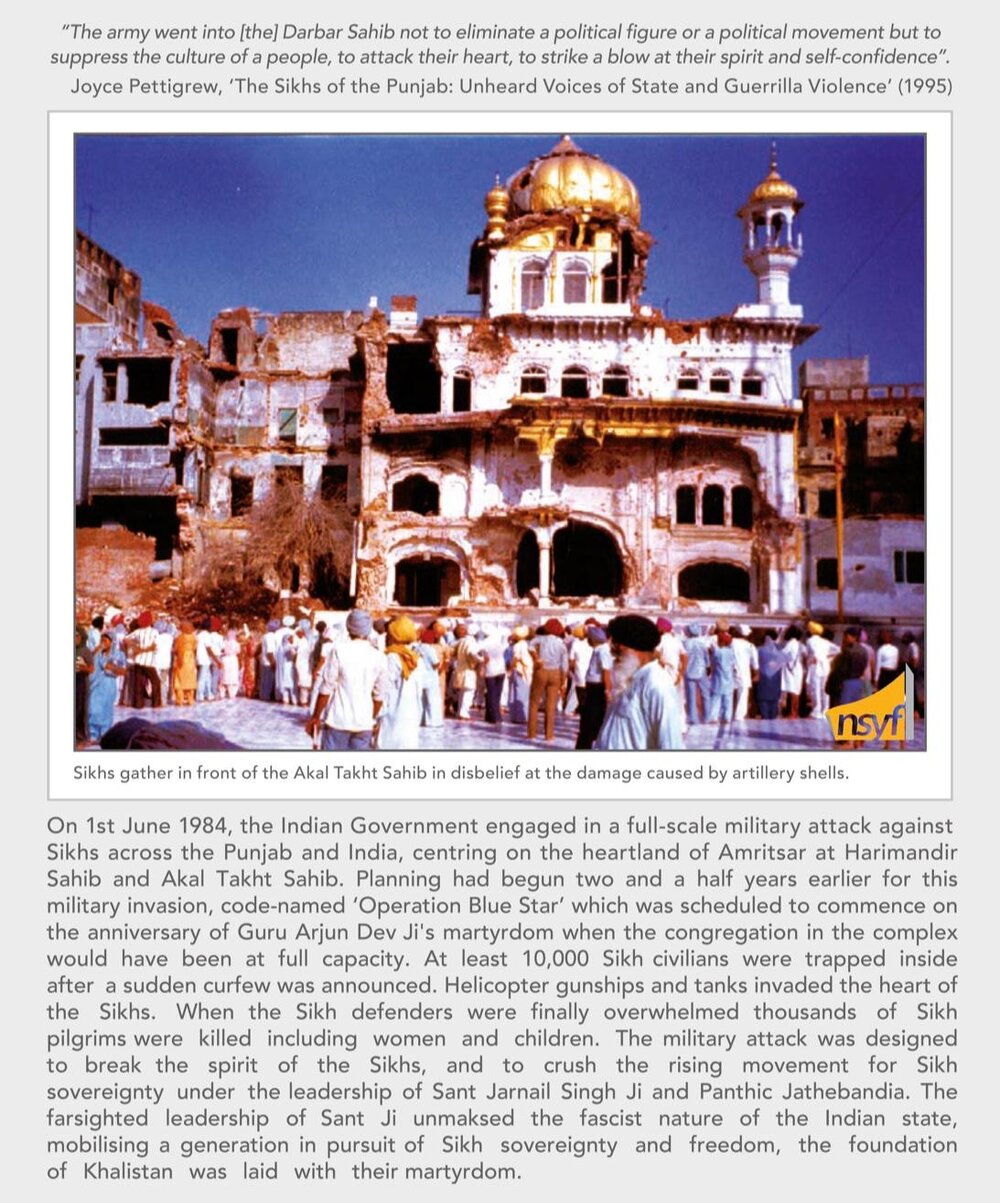

“The egoist Mughal & British raj thought Sikhi would be destroyed under their yoke of oppression, in the same way the Hindustani government wanted to destroy our Sikhi spirit and teach us a lesson, to make us believe in being “indian” by inflicting the full violence of the state. Before her plans could be carried out to their full extent, Indira Gandhi met her destruction, yet her loyal subjects still tried their best and put into action their ‘solution’ to the problem of Sikhs. All Sikhs were into targets, to be raped and burned to save the idea of india.”
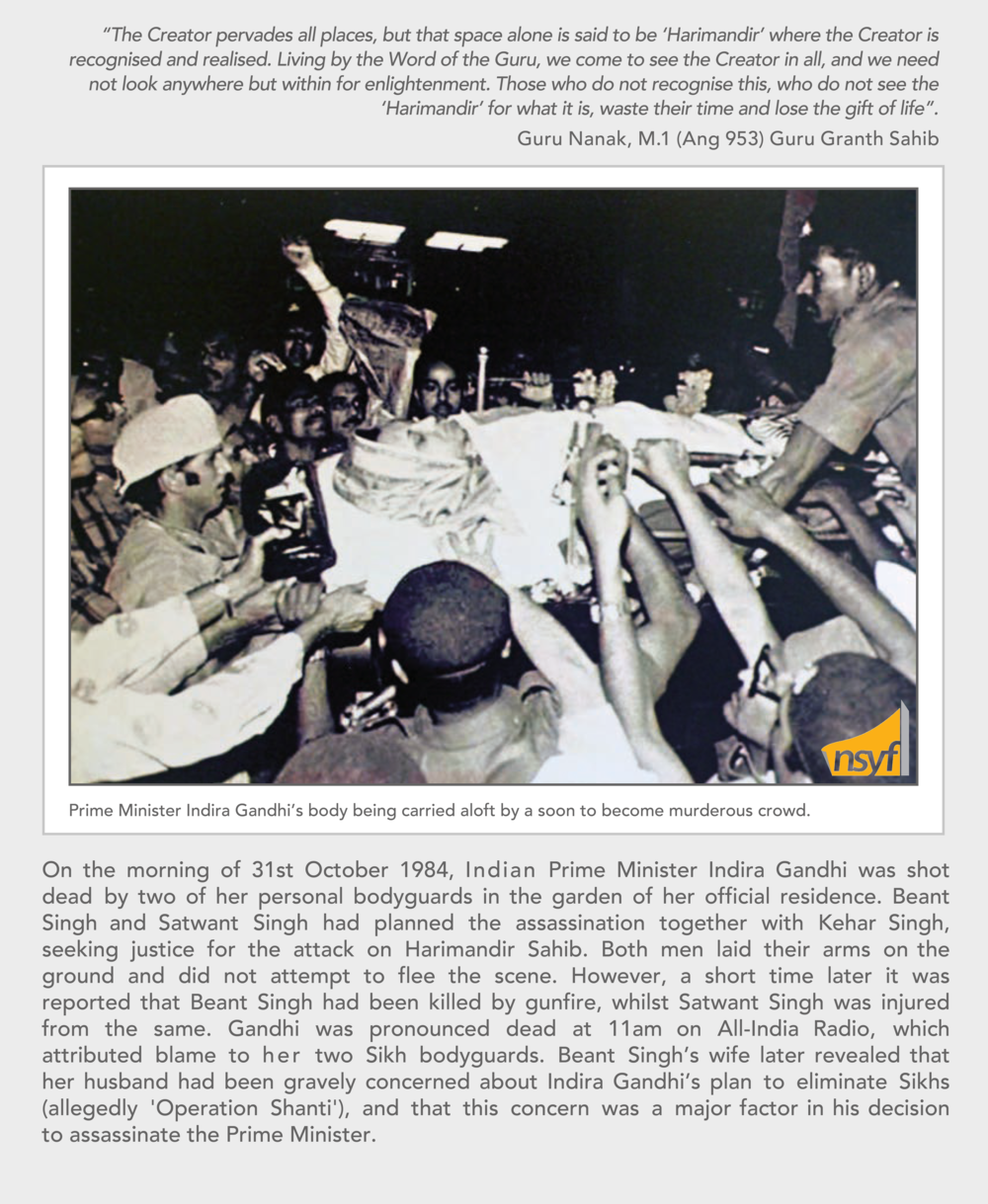
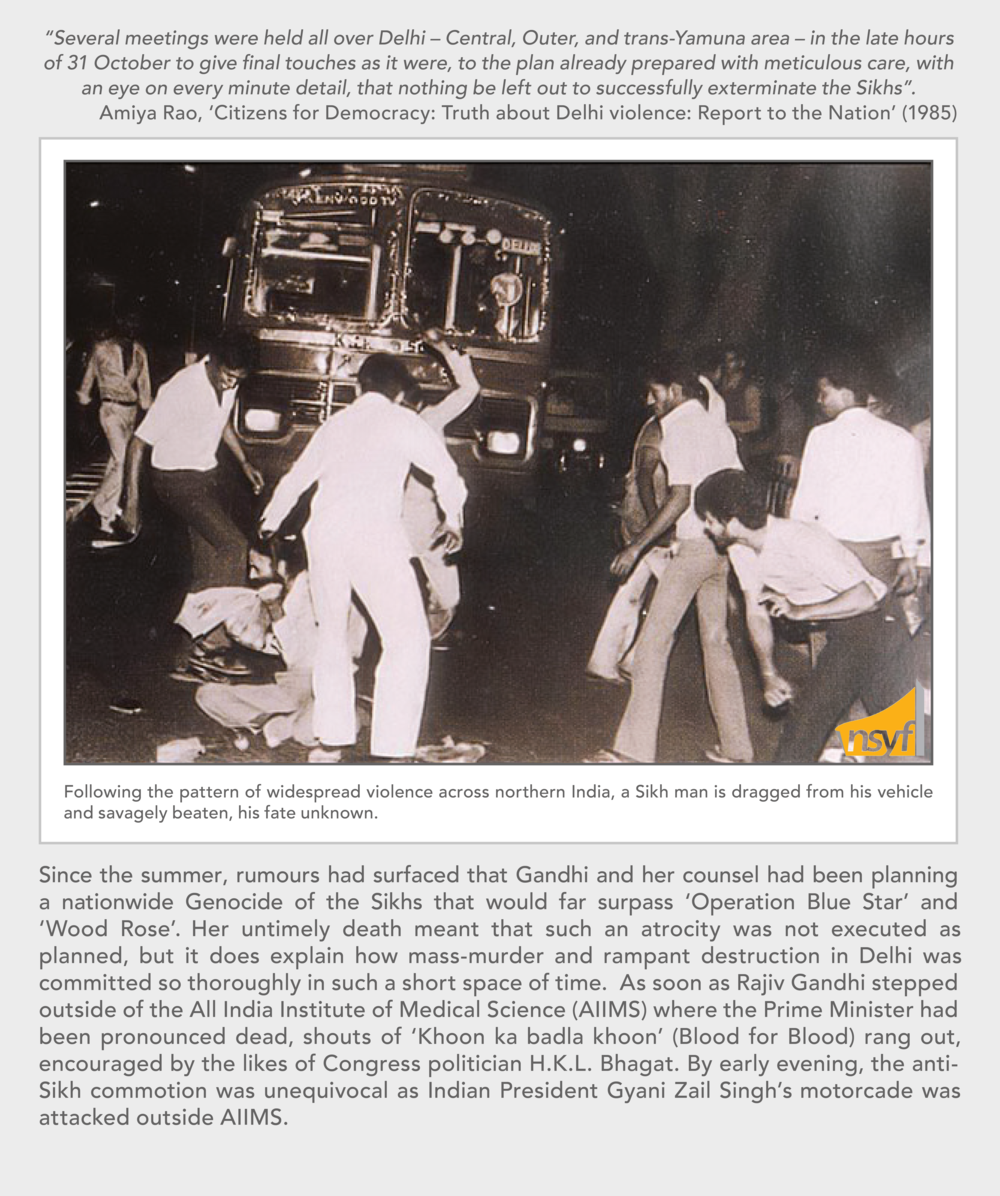
“The anti-Sikh violence continues in the Indian capital New Delhi and in other states where the congress party has control. Organised kill squads are send to murder Sikh residents as the police are either inactive or are actively participating in the genocidal violence.”
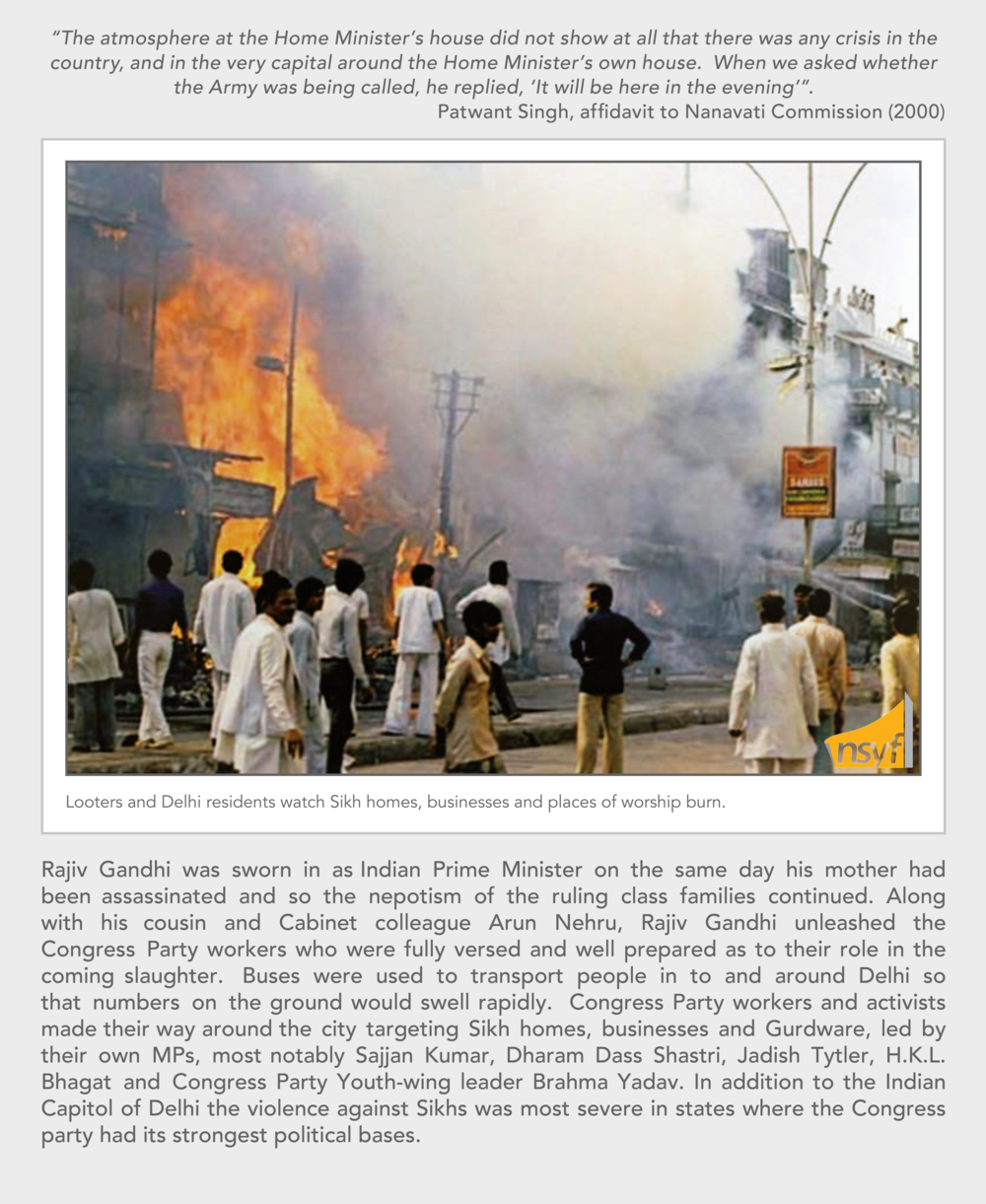
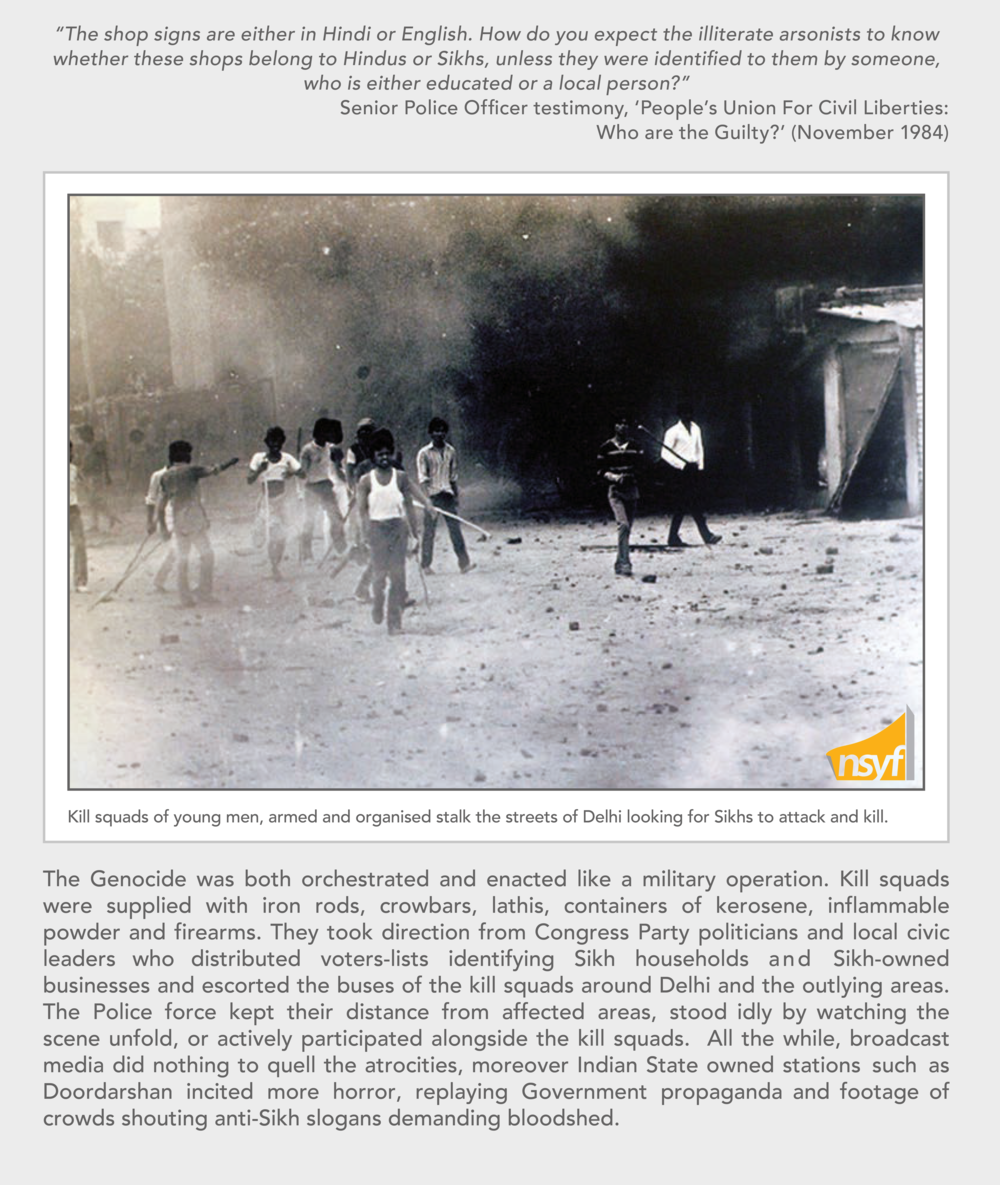
“From 35 years ago till today the anti-Sikh violence has been called “communal violence”, “mob violence”, “an out pouring of grief”, all of these terms are code for organised, state sponsored, Hindu fascism.”
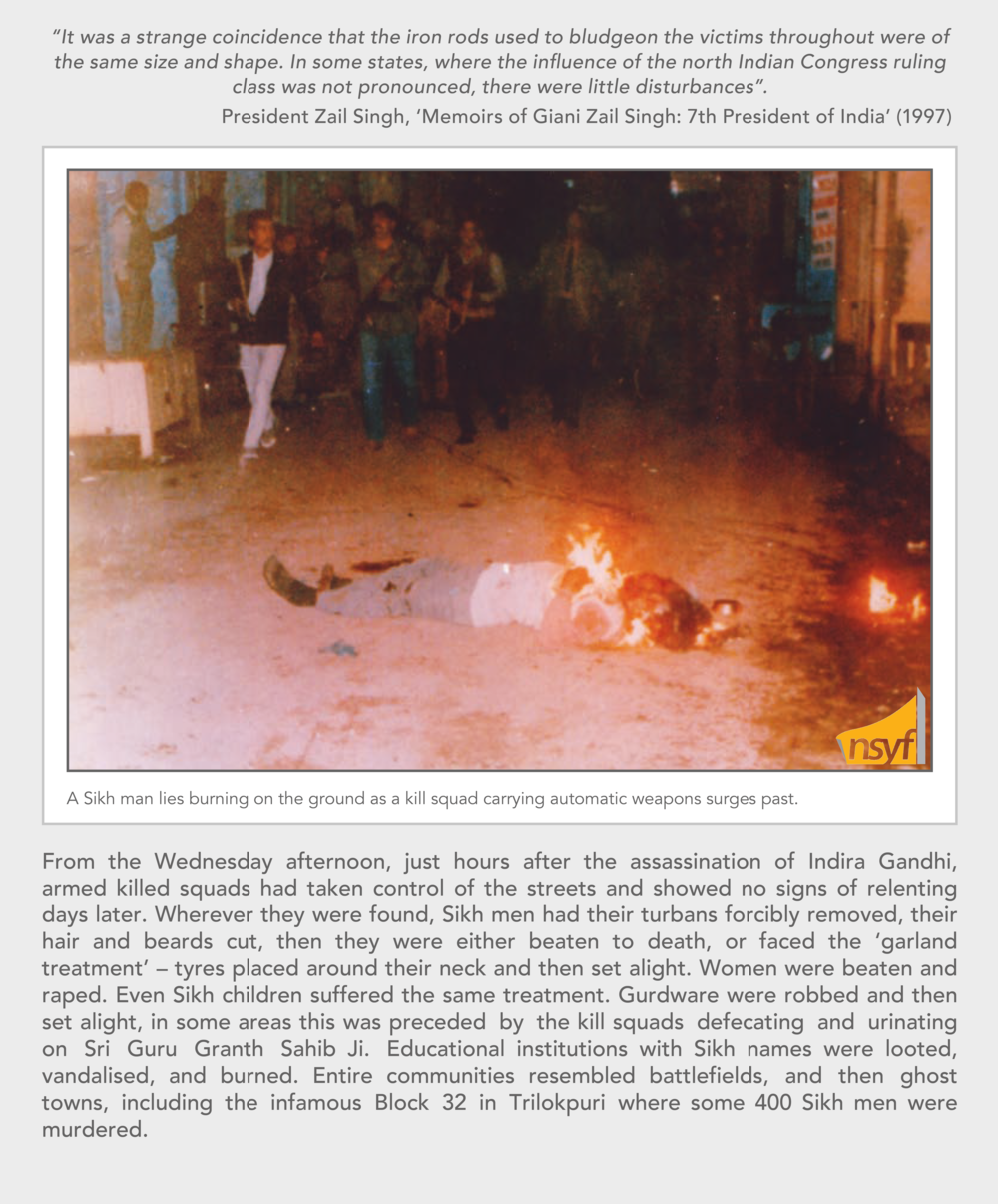
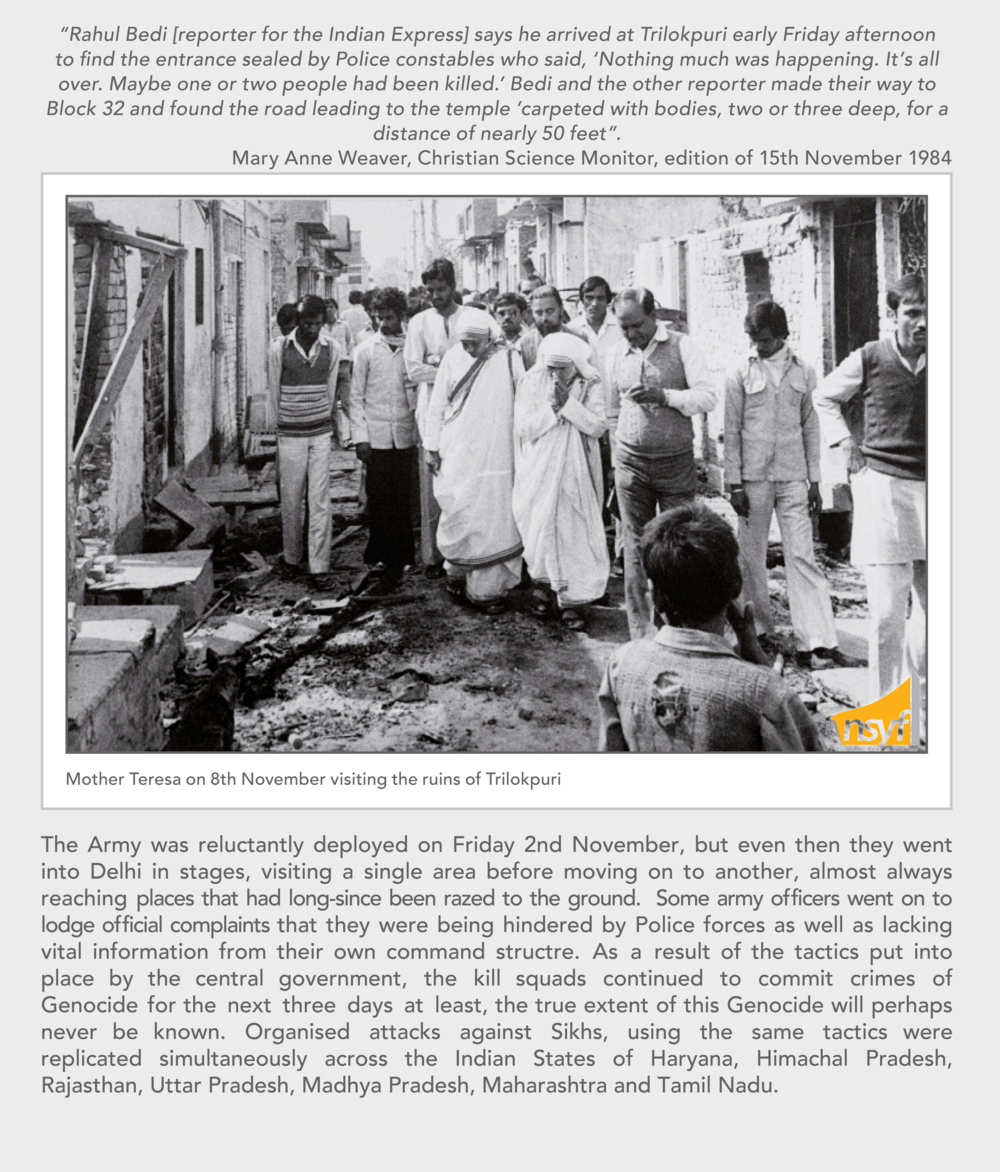
“At the root of the conflict with those that have sought to rule over the Khalsa is Sikh sovereignty. For Sikhs only Guru and GurSikhi can define their being. Throughout their history Sikhs have been collectively punished for their defiance and yet they still RISE. Khalistan Zindabad”
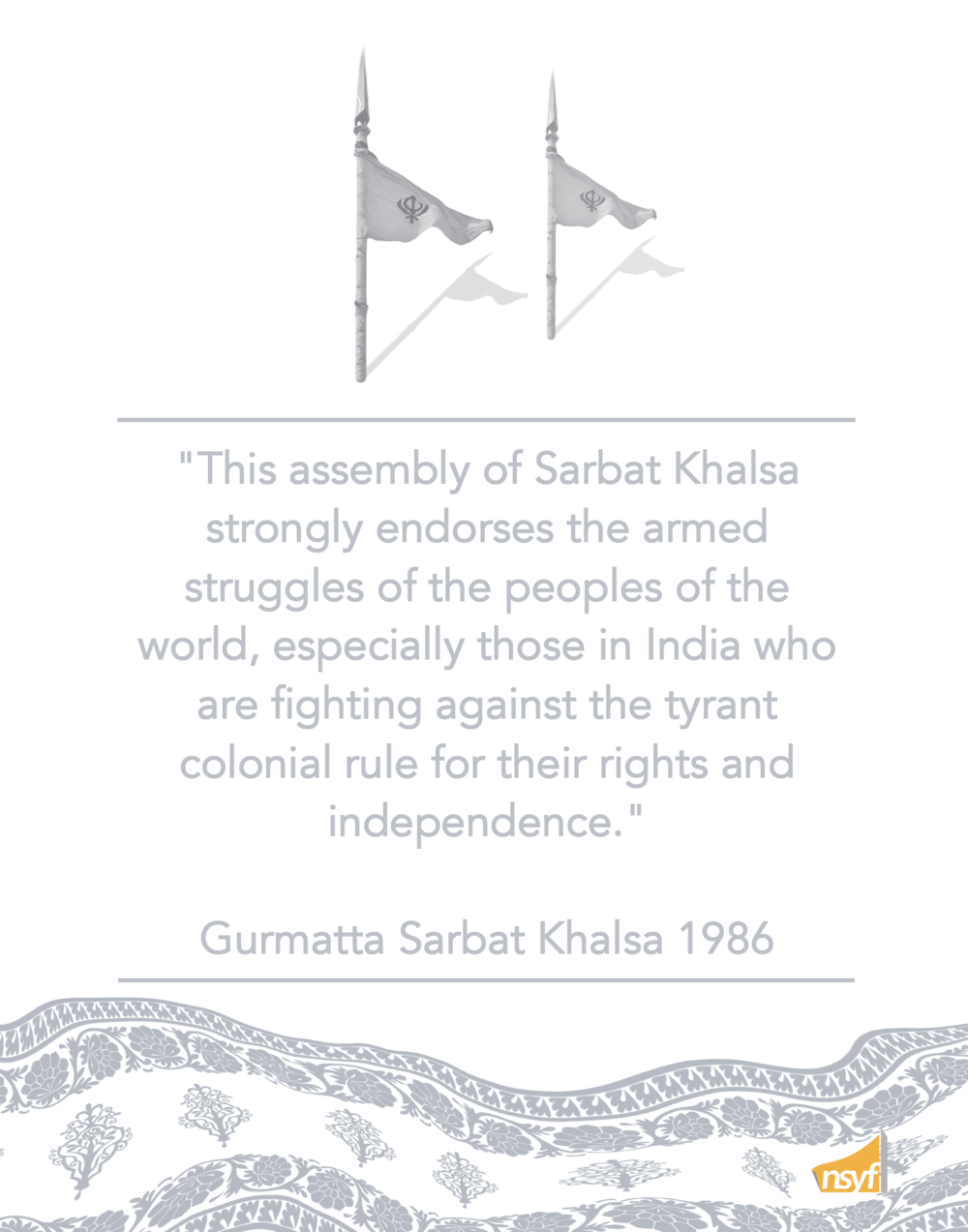
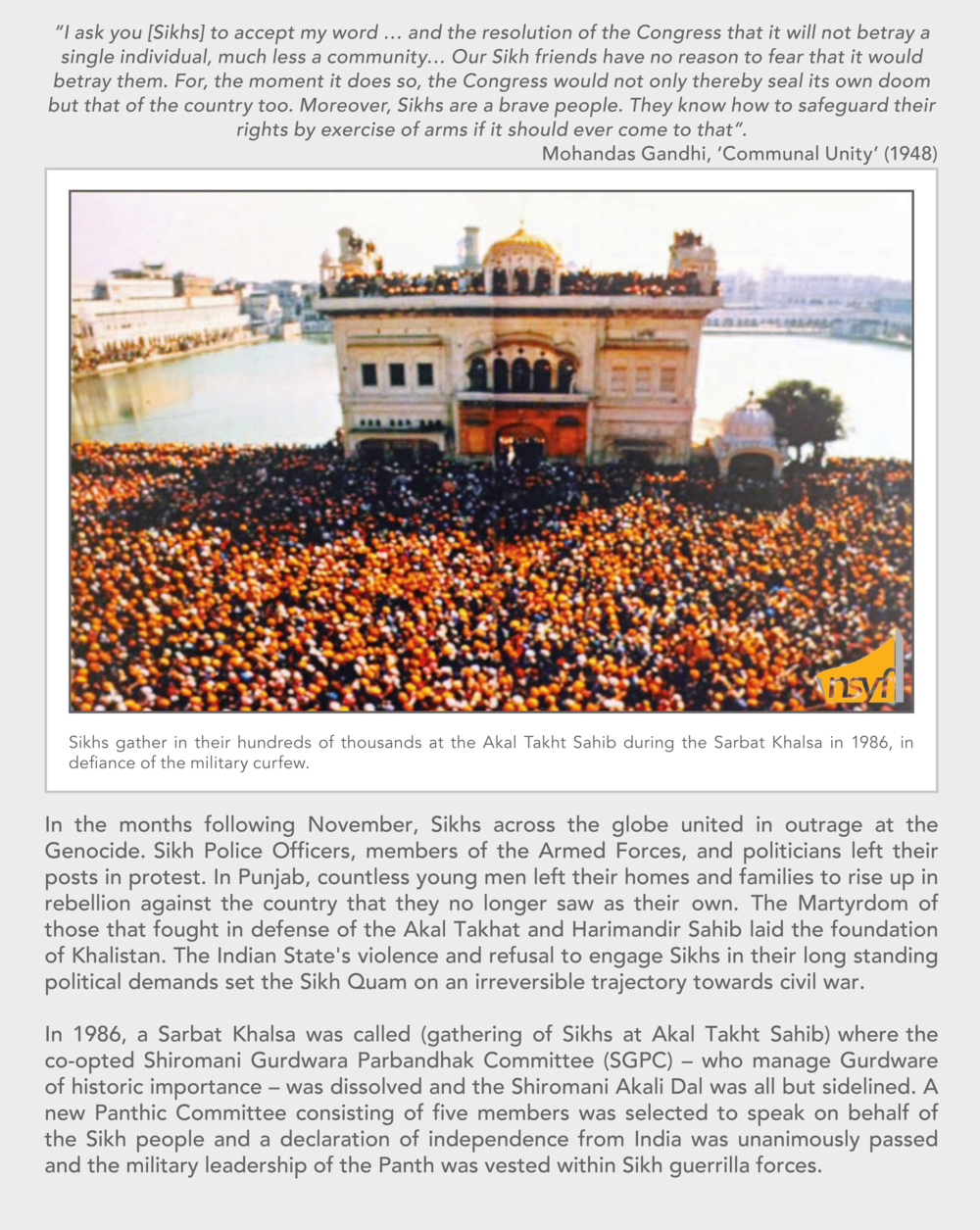
Candle in the Dark Gallery
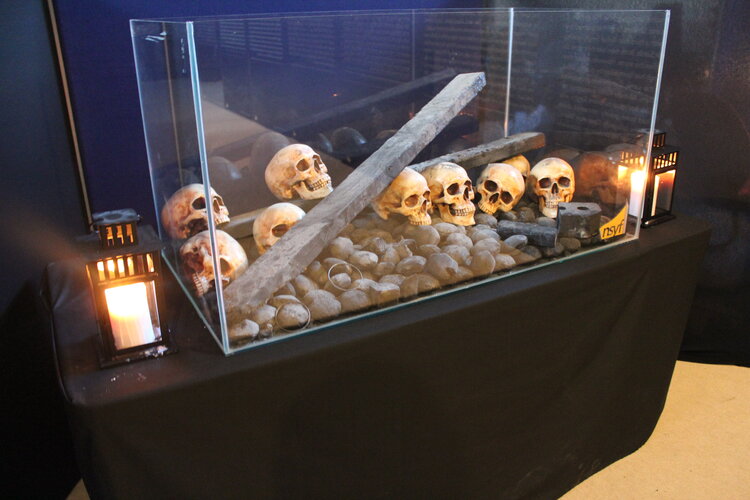

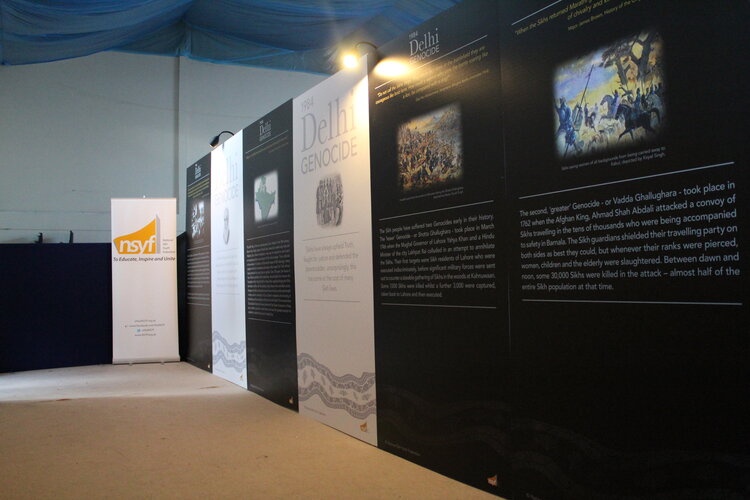


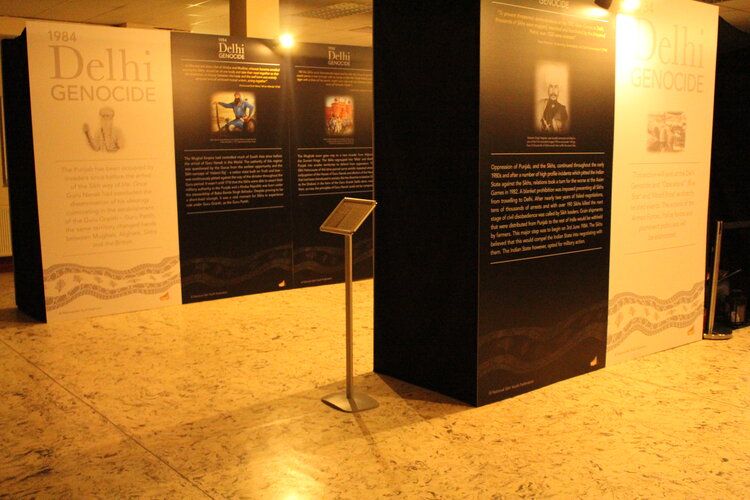

© National Sikh Youth Federation

